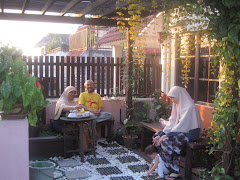Also see Allergy page 197
During an asthma attack, the muscles in the walls of the small airways contract (bronchopasm), the linings of the small airways become inflammed, and excessive mucus is produced in the small airways. All three reactions combine to narrow the airways, thus limiting the passage of air, especially during breathing out. The disorder usually begins in childhood, with about half the children outgrowing it.
Symptoms
Complications
Common causes
Asthma is the result of a hypersensitivity reaction to stimuli, inflammation and constriction of the air passages. It is a condition due to both hereditary and environmental factors. An asthma attack may be provoked by:
What you can do
. you or your child is not getting better after following the doctor's instructions.
. you or your child is unable to talk because of breathing difficulty.
. you or your child requires inhaled bronchodilator very often (eg more than 3-4 hourly).
. your child looks exhausted.
What your doctor can do for you
Prevention tips
Helplines
Persatuan Asma Malaysia 03-757 6641
This article is reffered to Malaysia Healthcare Guide - The family health guide, MIMS, 2nd edition, 1997, page 223-224
Symptoms
- Chest tightness.
- Breathing difficulty; laboured breathing in episodes. (Symptoms are worse at night.)
- Wheezing (a whistling sound while breathing).
- Coughing, with or without thick sputum.
- During severe attacks, cyanosis (bluish discoloration) around the lips, sweating, and a fast pulse rate.
- In infants, fast breathing, with the lower ribs being drawn in.
Complications
- Pneumothorax (collapsed lung due to an air leak).
- Acute respiratory failure.
- Death.
Common causes
Asthma is the result of a hypersensitivity reaction to stimuli, inflammation and constriction of the air passages. It is a condition due to both hereditary and environmental factors. An asthma attack may be provoked by:
- Allergens (eg. animal dander, dust, certain food and medicines, mites, mold spores, pollen, etc).
- Viral or bacteria infections (eg. bronchitis, common cold, coughs, sinusitis).
- Environmental irritations (eg. exhaust gases, hair spray, perfumes tobacco smoke).
- Emotional stress (eg. excitement, upheaval).
- Strenuous exercise.
What you can do
- Consult a doctor the first time you start wheezing, or if the condition does not respond to the prescribed treatment.
- Take the medication prescribed by the doctor (eg bronchodilator). Inhaled bronchodilators are usually recommended. Wait 15-20 minutes after an inhaled dose. Rrepeat if necessary.
- Take your peak expiration flow rate.
. you or your child is not getting better after following the doctor's instructions.
. you or your child is unable to talk because of breathing difficulty.
. you or your child requires inhaled bronchodilator very often (eg more than 3-4 hourly).
. your child looks exhausted.
- Try to be calm and call for help if you cannot cope. See HELPLINES.
- Rush the nearest hospital's emergency room if you have an accute attack.
- Sit the person upright and make him lean forward, with both arms resting on the table.
- Rush the person to the nearest hospital's emergency room if an acute attack does not respond to the prescribed medication.
What your doctor can do for you
- Administer oxygen.
- Administer a bronchodilator via nebulisation.
- Administer oral or intravenous steroids.
- Treat an accompanying chest infection with antibiotics.
- Prescribe long-term anti-inflammatory treatment.
- Teach you how to manage acute attacks, and how to use certain devices (eg inhaler, turbuhaler, rotahaler, diskhaler) to ensure optimum benefit from them.
- Teach you how to use a peak flow meter to monitor your asthma.
Prevention tips
- Know what triggers the asthma attack. If possible, avoid the factors that trigger the disease. (Keep your home free of dust, animal hair, mites, etc.; and stay away from irritations such as cigarette smoke, exhaust fumes, etc).
- Stop smoking.
- Take the medications prescribed by the doctor to reduce the frequency and severity of subsequent attacks.
- Exercise regularly to improve lung and heart function.
Helplines
Persatuan Asma Malaysia 03-757 6641
This article is reffered to Malaysia Healthcare Guide - The family health guide, MIMS, 2nd edition, 1997, page 223-224





No comments:
Post a Comment